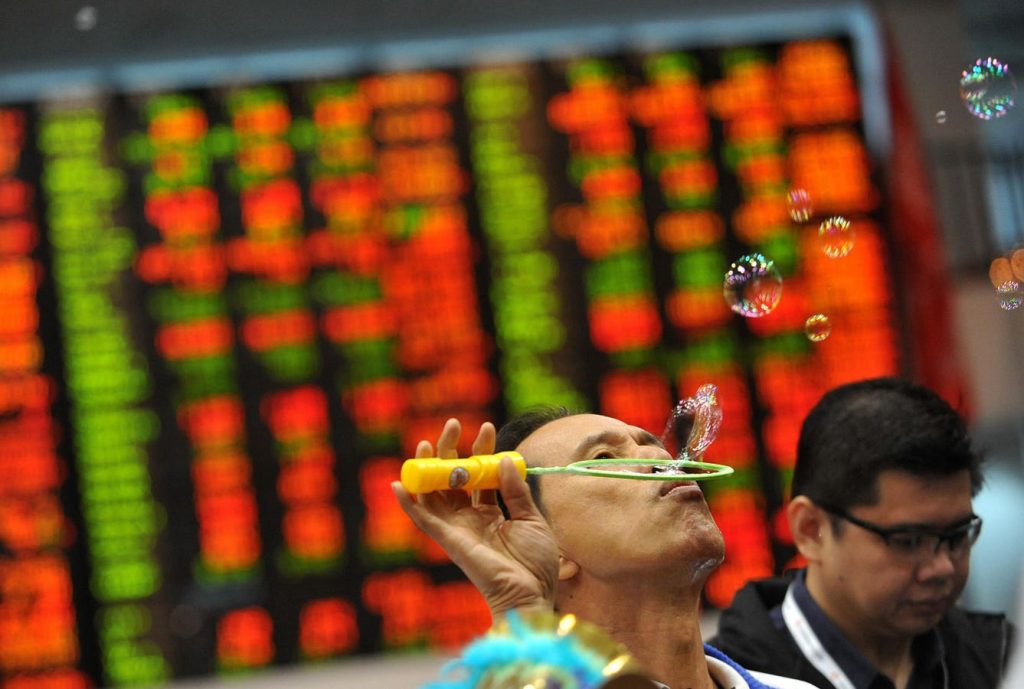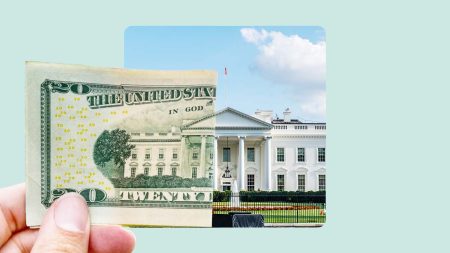Nvidia shares dropped nearly 7% over a two-day span, sparking concerns that the meteoric rise of the artificial intelligence market leader’s stock price may have peaked. Nvidia briefly surpassed Microsoft and Apple midweek to become the world’s most valuable company but slipped back to third place by Friday’s close. Investors are now debating whether to take profits on NVDA and the broader AI sector or stick with the theme that has driven most of this year’s S&P 500 gains.
First, the recent 7% dip should be taken into context. Nvidia shares are still up 156% year to date, and last week’s dip is relatively minor and barely shows up on a long-term chart. Investors should expect dramatic and painful drawdowns from companies that have moved so far so fast. Nvidia is no exception. Its shares fell by 66% at one point in 2022 and have had four drawdowns of approximately 15% or more in the last year alone.
Still, several concerns are causing investors to reevaluate their faith in the Nvidia rally. Gaining the status as the world’s most valuable company when the overall economy appears to be losing momentum is one obvious worry. The extreme domination of large-cap technology stocks at the index level is another. Also, the significant outperformance of AI-related stocks in the last month relative to the rest of the market has once again prompted talk of bubble-like price action. These concerns provide an opportunity to pause and look at Nvidia from a larger perspective. Is a bubble forming, or is the share price appreciation warranted?
There are some standard definitions of a stock or stock market bubble, primarily using history is a guide. Typical characteristics are rapid and substantial price increases that outpace reasonable valuations; widespread investor enthusiasm and speculation, often accompanied by a fear of missing out and speculative behavior; and a belief in new paradigms, technologies, or economic conditions that create excitement about future growth prospects.
Rapid And Substantial Price Appreciation
Nvidia and other AI stocks have rocketed higher in the last 18 months. Nvidia has soared nearly 800% since the start of 2023 and other tech giants like Meta (+297%), Amazon (+120%) and Microsoft (+88%) have done the same. However, the near-parabolic rise is not without fundamental support. Nvidia continues to exceed analysts’ expectations of earnings and profit growth and boasts an estimated market share of 80% in specialized chips needed for most AI applications. The other technology leaders are also delivering earnings growth above what many thought possible.
Specifically, Nvidia’s financial results for the first quarter of fiscal year 2025 showed revenue growth of 262% compared to a year ago. Data center growth was even more impressive, climbing 427% from last year. With gross margins of 78%, profits are following suit. Clearly, there is more to Nvidia than pure speculation.
From a valuation perspective, Nvidia is not cheap. According to Bloomberg data, NVDA’s one-year forward price-to-earnings ratio is 47x, compared to 35.9x for the Philadelphia Stock Exchange Semiconductor Index, 29x for the NASDAQ 100 Index, 22.6x for the S&P 500, and 17.8x for the equal-weight S&P 500 Index. Yes, Nvidia is expensive relative to the broader market, but that is to be expected given the rapid growth in revenue and earnings. Investors are willing to pay up for growth, and Nvidia is delivering. Applying traditional valuation metrics to fast-growing companies in relatively new industries is often futile. But are the current multiples too extreme?
By comparison, during the peak of the dot-com bubble in 2000, Nasdaq 100 stocks traded at an absurd trailing P/E of 200, more than six times today’s level. Cisco, a poster child of the dot-com era, was valued at a multiple of more than 150 times forward earnings when the stock hit its peak in March 2000. In this context, neither Nvidia nor the broader market are near the valuation levels seen during the internet bubble. However, Nvidia’s recent earnings and sales multiple expansion suggests a disconnect between the share price and performance of the underlying business. AI stocks have spiked, and valuations have stretched, but at least some fundamental support is behind the craze.
If rating its rapid price appreciation bubble on a scale of 1 to 10, the score is likely a seven.
Widespread Investor Enthusiasm And Speculation
Another potential sign of a bubble is extreme euphoria and speculation surrounding a stock or a theme.
The options market is one place to look for excessive sentiment. Stocks or sectors where call option volatility is trading higher than put option volatility is often a sign that investors expect significant upside from existing levels. Currently, 1-month and 3-month call options have roughly the same level of implied volatility as put options. This is consistent with market pricing over the last year. Call options were more expensive last March around the earnings report. Today, there does not appear to be extreme bullishness in the options market.
Still, everyone is watching the AI boom. Public company mentions of AI in earnings calls are at a record high. Roughly 40% of S&P 500 discussed AI on their earnings calls this past quarter — up from 1% five years ago, according to data from FactSet. Most of these companies cite AI as a potential productivity booster rather than an additional source of revenue, and many are making substantial investments in the technology. There is widespread enthusiasm about AI, but it should not be considered speculation since productivity improvements have already been established.
A potentially worrisome sign would be a rush of new companies tapping the public markets to raise money for anything related to AI, similar to the internet bubble where investors scrambled to buy anything with “.com” in the name. According to Bloomberg, total initial public offerings are running at about $16 billion in proceeds raised year-to-date versus about $20 billion for all of 2023. In terms of deal count, there have been 88 IPOs through mid-June 2024, compared to 154 in 2023. The record was set in 2021 with 1035 IPOs. If there was an AI startup bubble, it peaked in 2021.
If rating the level of speculation in Nvidia to past bubbles on a scale of 1 to 10, the score is probably a six.
Belief In New Paradigms
AI is not the first technology to induce predictions of a materially altered future. Crypto was supposed to be the future of finance, and 3-D printing was expected to revolutionize manufacturing. Neither crypto nor 3-D printing has lived up to the initial hype. AI may fall into the same category, but there are reasons to believe it will indeed have a material impact on economics and society.
Big technology firms and dozens of large corporations are making huge investments in the space. Hundreds of billions of dollars are flowing into Nvidia’s chips and AI-related infrastructure, such as data centers and the electrical grid. These investments are already paying off in direct AI revenue and enhanced productivity.
According to a recent PwC report, AI is predicted to increase productivity, raise growth domestic product growth, contribute to scientific discovery, and improve the healthcare system. The study predicts AI has the potential to contribute 14%, or $15.7 trillion, to the global economy by 2030. These are lofty predictions and very well may materialize. However, the fact that these studies are becoming more prevalent indicates belief that a new paradigm has formed.
A number of changing circumstances could quickly alter the impact of this new paradigm. Shifts in global trade policy, emerging new technologies and competitors, a markdown in global growth expectations, or geopolitical shocks are just a few examples. AI could have a significant impact on many aspects of society, but it is possible that the return on investment will fail to materialize. Regardless of the outcome, investors are betting on, and talking about, a “new future.”
When comparing the level of belief in a new paradigm to past bubbles on a scale of 1 to 10, the score would likely be an eight.
Nvidia Is Not In A Bubble But It Is Not Without Risk
Nvidia has become larger than the respective stock markets of Germany, France, and the U.K. Nvidia and other companies directly benefiting from AI are now at valuation levels that offer little room for error, and they must continue surpassing expectations and maintaining their market leadership to justify their current price.
Is there a risk of another drawdown similar in magnitude to the ones we have witnessed over the last year? Absolutely. But is there a bubble-bursting crash in all AI-related stocks around the corner? Likely not. According to standard definitions of a bubble, Nvidia does not appear to be in the late stages of a one: valuations are high, but not at extreme levels; enthusiasm about AI is widespread, but not without fundamental support; and AI has already started to deliver on some of the lofty expectations in terms of new applications and overall productivity, validating predictions of a new paradigm.
Read the full article here
















